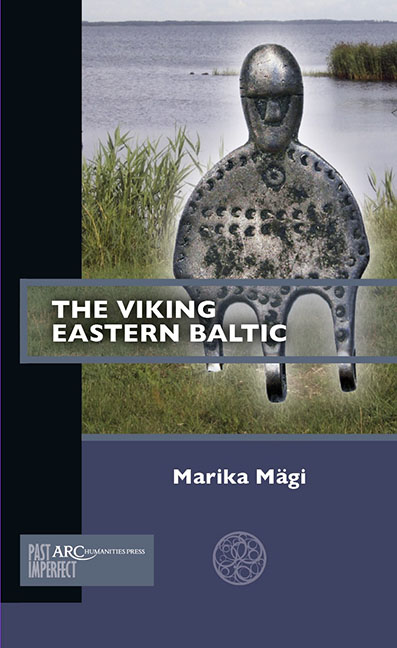Book contents
- Frontmatter
- Contents
- List of Illustrations
- Introduction
- Chapter 1 Different Cultures, Different Modes of Communication
- Chapter 2 Eastbound Routes Gain Momentum
- Chapter 3 Baltic Sea Warriors
- Chapter 4 The High-Point of Scandinavian Eastward Activity
- Chapter 5 End of the Viking Age
- Conclusion
- Further Reading
Chapter 4 - The High-Point of Scandinavian Eastward Activity
Published online by Cambridge University Press: 20 November 2020
- Frontmatter
- Contents
- List of Illustrations
- Introduction
- Chapter 1 Different Cultures, Different Modes of Communication
- Chapter 2 Eastbound Routes Gain Momentum
- Chapter 3 Baltic Sea Warriors
- Chapter 4 The High-Point of Scandinavian Eastward Activity
- Chapter 5 End of the Viking Age
- Conclusion
- Further Reading
Summary
The various Baltic peoples’ mercantile connections with the east received a major boost in the second half of the ninth century, and most of the tenth century was characterized by a boom in eastern trade. It was during this period that large amounts of silver poured into the Baltic Rim from Arabic countries. Part of the silver was probably melted down and recast, some has survived to this day in the shape of so-called Kufic coins or dirhams.
Most researchers agree that the main commodities the Baltic countries exported to the Arabic world in return for silver were furs and slaves. Mention has already been made of swords sold to Arabic countries by the ar-Rus merchants; however, these cannot have played any major role in the suddenly blossoming eastern trade.
The economies of most Muslim countries needed an extensive slave workforce to function properly, and sources often mention blond and blue-eyed slaves. At that time, fair-haired people inhabited the territories of modern Finland and the Baltics, Scandinavia, Belarus, and Ukraine rather than the northern part of modern-day Russia. The Eastern Way to the Volga River normally did not go through Belarus or Ukraine, so it is reasonable to assume that the fair-haired slaves sold at the Bulgar markets were kidnapped from the shores of the Baltic during raids.
Trade Routes and Hoards
Judging by archaeological material, especially hoards and their composition, it seems that in the tenth century the predominant long-distance trade route through modern Russian territory was the Eastern Way reaching from the Baltic Sea through the Gulf of Finland to the Volga River, and then southwards to the Middle East. No doubt the other route, leading along the Dnieper River to the Black Sea and Constantinople—the so-called “route from the Varangians to the Greeks” to quote the Primary Chronicle—also saw lively traffic. The dearth of Byzantine coins and absence of Byzantine imports in the Baltic Rim have inspired suggestions of a much lower intensity of traffic on this particular route in the tenth century as compared to the eleventh. This theory seems to be supported by similar patterns in the archaeological finds from the surroundings of the Daugava River, which served as the main access from the Baltic Sea to the Dnieper and also saw a major upsurge in usage from the eleventh century onwards.
- Type
- Chapter
- Information
- The Viking Eastern Baltic , pp. 59 - 76Publisher: Amsterdam University PressPrint publication year: 2019



